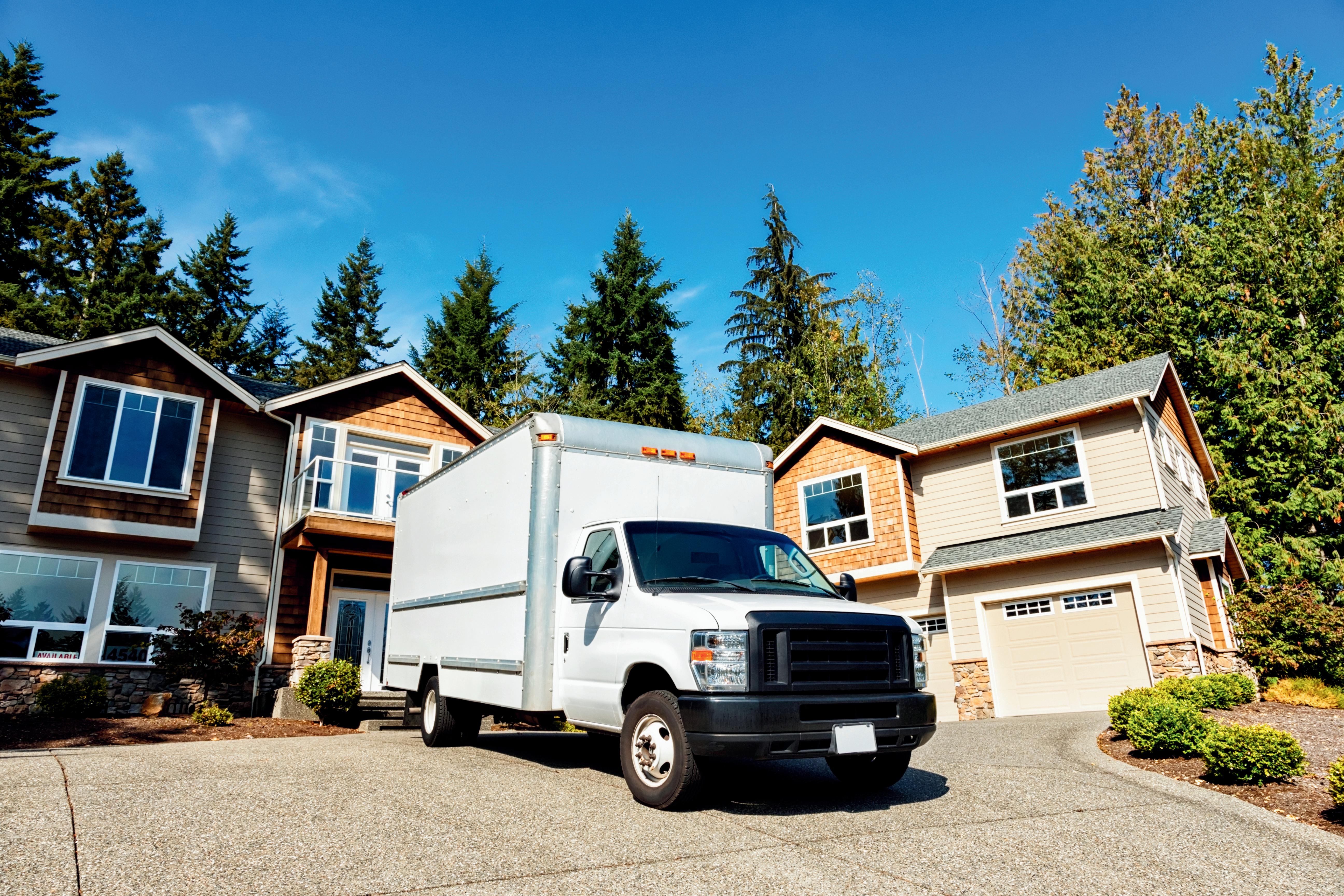






Arrange for moving your furniture and personal belongings either by hiring a moving company, or renting a truck.
*Make sure to get estimates from several moving companies & be sure to obtain an appliance dolly (if moving yourself).
Gather moving supplies:
1.Boxes
2.Tape
3.Rope
4.Any other moving supplies needed
Plan your travel itinerary and make transportation/lodging reservations in advance if traveling to your home.
*Be sure to leave an intinerary copy with friends or family
Some moving expenses are tax-deductible (if the move is employmentrelated), so you will want to save your moving expense receipts for tax. deductions, including meals, lodging, and gasoline. Record expenses incurred during your house-hunting trips.
Develop a packing plan, and pack the things you use the most last.
*See tips on packing in the next section!
Notify others of your new address:
-Post office
-Charge accounts & Subscriptions
-Relatives & Friends
-National & Alumni organizations
-Past employers (for W-2 purposes)
-Retirement account info
*Save your old address labels to speed up filling out any change-of-address forms.
Notify federal & state taxing authorities or any governmental agency



Notify and get refunded from all of your present utilities: gas, electric, water, cable, and phone.
*Arrange for services at your new address
Have your car serviced- if your drive to your new home is long distance
Recruit a team to help you on moving day
Arrange for care of your children or pets during your move
Confirm moving company or rental truck
Keep moving materials in a separate place so they do not get packed until you are finished
Pick up the rental truck
*If moving yourself
Fill up your car with gas, and check your oil & tires




Decide what to move and what not to move. Possibly have a garage sale (extra cash and less to move). See “Tips on Having a Garage Sale” on the next page.
Transfer your bank accounts. Your new bank will be happy to open your account by mail or email.
Request records from doctors and dentists, including eye-glass prescriptions, dental, x-rays, and vaccinations.
Obtain your children’s school records to make for an easier transfer.
Draw up a floor plan of where your furniture should be placed. This will help avoid confusion for you and your movers.
Pay existing bills and close out local charge accounts.
Arrange any special movers, that may be necessary for an expensive piano or to break down and move a pool table or above-ground swimming pool.
Cancel or transfer deliveries, newspapers, garbage collections, etc. Coordinate the transfer of gas and electric, water and sewer when not handled by the title company, with the next occupant of your old home as well as with the previous owner of your new home, so as to avoid lapses in service and extra re-start expenses.
Check on personal items that might be at the photoshop, in a safe-deposit box, at a neighbor’s house, on lay-away, or in a repair shop (e.g., shoe repair, jewelry store, small- appliance repair, or dressmaker).
Make arrangements for transporting your plants and pets
Save the phone book from your former city residence for tying up loose ends or for future correspondence.

Transfer insurance policies or arrange for new policies.


Gather all valuables, jewelry, important papers (birth certificates, deeds, and documents) to take with you personally.
Pack an arrival kit of necessities just in case you arrive before your movers
*If applicable
Purchase moving insurance. Your mover's liability for lost or damaged goods will not equal their replacement cost. Have vulnerable items appraised
Check with your attorney about your will, if crossing state lines.
Ask for professional referrals if available (e.g., doctor, accountant, etc.).




Allow plenty of time three or four weeks to prepare for the sale.
Choose a date that will not conflict with holidays.
Weekends are more convenient for more people than weekdays.
Your sale is likely to attract more people if you join together with neighbors in an effort to have more merchandise. Some homeowners’ groups are sponsoring neighborhood sales that are proving popular!
Practical household goods are popular items; adult clothing hasless appeal
Merchandise your items attractively in neat, clean surroundings
Cluster like items together; place the more desirable items in the back of the garage so browsers are urged to look at other merchandise on their way to the most popularitems
All items should be cleaned, polished, and in good repair.
Locate your appliance table near an outlet so customers can test the product.
Be sure there is adequate parking and a space to load heavier items.
Have plenty of bags and boxes for packing and newspapers for wrapping fragile items.
Place a classified ad in the local newspaper. Be sure to include 3-4 items you're selling.
Take advantage of free bulletin boards- hang flyers at the supermarkets coffee shops.
Provide directional signs to your property.



If your home is listed for sale, keep flyers about your home available for people to take.
If you need an idea for pricing items,visit other sales in your area.
Post a notice stating all sales are final and will be paid in cash.
Have plenty of change in a cash box that is kept in a protected spot. Keep a record of sales, especially when there are several sellers. One recording method that is simple and efficient is to use small white stickers for prices. When an item is purchased, remove the sticker and place it next to the name of the seller on a piece of paper.
On a hot day, have ice water or lemonade available so people will stay longer, and on cold days serve hot chocolate.
Tell your real estate agent about some of the major items in your sale. She/he may have a client looking for just that thing! One person’s trash is another’s treasure!




Use strong containers that are in good condition and can be secured tightly with twine or strapping tape. These can usually be purchased from your moving company. Purchase special boxes for dishes, wardrobe, and other special items.
Label each box with its contents, which room it should go in, whether it is fragile, and whether it should be loaded last so as to be unloaded first.
Don’t load more than 50 pounds into any one box, and make sure that the weight is evenly distributed.
Cushion contents with newspaper or other packing material to prevent breakage. Use newsprint paper or tissue paper for items that might be soiled by the newspaper. Towels and cloth napkins are great for wrapping fragile items.
Pack books tightly in small boxes. Alternate bindings and wrap valuable books separately.
Have your rugs and draperies cleaned before moving and leave them in their wrappings for easier handling.
Remove all breakables and liquids from drawers and pack them separately. Seal medicines and other containers to prevent leaking and pack them in a leak-proof bag or container.
Pack linens and clothing in drawers, but don’t overload them.
Carry all valuables with you. Do not pack jewelry, documents, coin or stamp collections, or anything that will be difficult to replace. The contents of a safety deposit box can be moved for you by your bank.



If you think moving is hard on grown-ups, imagine what it’s like for kids. They’re starting over and trying to meet new friends while getting used to a new home, neighborhood, and school. Think about your children’s specific needs before, during, and after the change and you’ll make a big difference in how your children feel about the move and how they adjust afterwards.
(Adapted from information at www.MoversGuide.com.)
Give your kids a space to discuss their feelings on the move
Help them put together a list of family and friends to reassure them that they will remain in contact despite the move.
Visit your new community prior to moving and set up some activities for your child(ren)

Stay as upbeat and calm as you can. Your own mood will impact your children’s moods. Involve your children in the packing. Older children can put their own belongings in boxes, and children of all ages will enjoy decorating the boxes containing their things.
Don’t pack things that your children treasure. Take special blankets, favorite books, and other prized items in the car or on the plane with you.
Help your children say goodbye to the important people in their lives. For their friends, a party is a fun way to celebrate the friendship.

For many families, moving day means a long car trip or a crosscountry flight. Prevent backseat blues and airline angst by adding travel fun and games to your plans.



To make your new home seem more like home, hang your child’s or family portrait in a prominent location or create a tabletop display of family photographs. Don’t spend too much time unpacking, at least not right away! In the first few days, take time to enjoy your new home with your family. Take walks and check out local restaurants. Above all, listen. Be there when your children get home after the first day at their new schools, even if it means having to leave work early. Ask often how things are going, and take time to listen.
Cats and dogs can either be shipped by air or taken along in the car. If you are flying to your new destination, your cat or dog can ride in the baggage compartment. Your pet will need a health certificate from your vet. Call the airline in advance to find out about special boxes they may have. If you are going to make a container for your pet, make sure that the container complies with airline regulations. It is a good idea to put a piece of clothing with your scent in the animal’s box so he/she feels more at home.
If you aren’t flying with your pet but are having him/her shipped by air, make sure that someone is on the other end to pick your pet up at the airport and take care of him/her until you arrive. The easiest way to care for your pet before your arrival is a kennel. Many kennels can take your pet several days before your move (keeping him/her safe and out of your way). Or you can take your pet to the airport and arrange to have a kennel on the other end pick him/her up and take care of him/her until you arrive.
Think twice about taking your dog or cat with you on a long cross-country trip. Not only can animals get car sick, but being cooped up in a car all day can make them nervous and upset. They must be fed and have plenty to drink (make sure that you take along a water dish), they have to make “rest stops,” and they have to be on a leash to keep them from running off anytime the car door is opened.
Some motels and hotels don’t allow pets. Others have special facilities for handling travelers’ pets. Call in advance and check out the available literature on hotels along your route. National chains usually publish such information.
Hamsters, birds, mice, and such can be transported in the family car fairly easily. Make sure that the animals have enough food and water in their cages and are out of drafts or extreme temperatures. Cover cages with a cloth to keep the pets quiet and restful.
It is not practical to move fish in their aquarium. A gallon of water weighs eight pounds. Plan on giving the fish away and restock the aquarium when you arrive at your new home.
Your veterinarian and pet stores are also valuable sources of information.





Here are some tips for travelling with your plant babies
Call your local U.S. Department of Agriculture to check on regulations if moving from one state to another. Many states have restrictions on certain kinds of plants to prevent importing bugs or pests that can destroy valuable cash crops in the state.
A couple of weeks before you move, prune plants to facilitate packing. Consult a florist or a plant book for instructions.
A week before you move, put your plants in a black plastic bag. Prior to placing your plant in the bag, place a bug/pest strip, conventional flea collar, or bug powder in the bag. Close the bag and place it in a cool area overnight. This will kill any pests on the plant or in the soil.
The day before you move, put your plants in cardboard containers. Make sure that they are held in place by dampened newspaper or packing paper. Use paper to cushion the leaves and place a final layer of wet paper on top to keep them moist. Water the plants normally in summer, a little less in winter.
On the day of your move, set the boxes aside and mark “DO NOT LOAD” so they won’t be taken on the moving van.
On the day you leave, close boxes, punch air holes in the top, and load them in your car.
When on the road, be careful where you park your car. Look for a shaded area in the summer and a sunny spot in the winter.

Unpack the plants as soon as you can after arriving. Remove plants through the bottom of the box in order to avoid breaking their stems. Do not expose the plants too much sunlight at first. Let them get accustomed to more light gradually.

If you must leave your plants behind, take cuttings. Put them in plastic bags paper towels around them.

